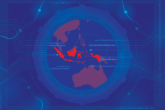April 13, 2018
How network tools can improve base security
In 2011, the simple exploitation of an existing data set could have prevented a near disaster in northern Afghanistan.
Then, an entire operations center watched as the feed from an MQ-1 drone, newly reassigned from its original mission, displayed a growing group of protesters at the perimeter of a small U.S. forward operating base. Although conventional signals intelligence indicated a possible disturbance, full-motion video confirmed the severity of the threat only well after it had matured. Intelligence analysts didn’t understand what the protestors were doing — and why they were doing it — until they had already massed at the entry point. If used properly, automated social media monitoring and geofencing, which calls for creating virtual geographic boundaries, could have filled this critical gap in situational awareness.
Read the full article at C4ISRNET
More from CNAS
-
Siliconsciousness: The AI Competition: Public Policy Strategies: Part 1
This episode comprises the first part of our special event, “The AI Competition: Public Policy Strategies”. The event, co-hosted by MIT Technology Review, brings together some...
By Dr. ED McGrady
-
How Drones in Ukraine Are Reshaping War
Samuel Bendett, a senior adjunct fellow at the Center for a New American Security, joins The Cipher Brief to discuss the current situation of drones being used in Ukraine.Watc...
By Samuel Bendett
-
Countering the Digital Silk Road: Indonesia
This year marks the 10th anniversary of the Digital Silk Road (DSR), China’s ambitious initiative to shape critical digital infrastructure around the world to advance its geop...
By Vivek Chilukuri & Ruby Scanlon
-
How Secure Is America’s AI Advantage?
https://www.youtube.com/watch?v=7njJkH7XRa8...
By Paul Scharre



